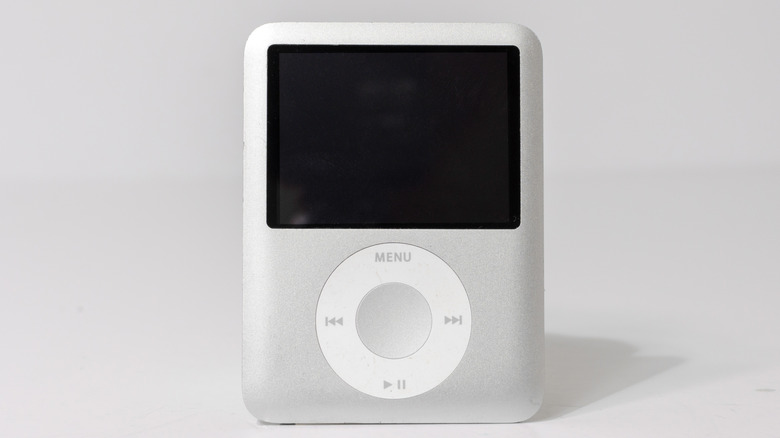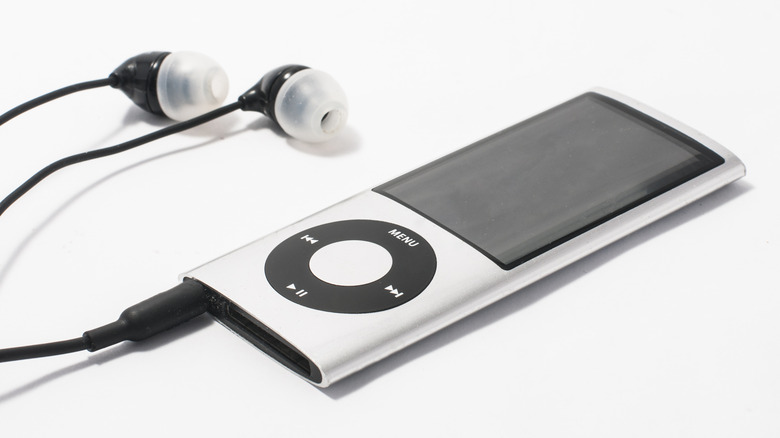Whatever Happened To The iPod Nano?
The iPod nano was Apple's replacement for the iPod Mini, a smaller version of the company's iPod portable music device. The nano proved immensely popular when it was launched in September 2005. By the holiday season, Apple had sold 14 million first-generation nano players, according to the Washington Post. After these initial successes, however, the model faced some difficulties due to how easy it was to excessively scratch the screen, eventually leading to a class-action lawsuit in October 2005 (via Macworld.) There were also multiple incidents of the nano causing burns and fires, which led Apple to eventually launch a replacement program, as noted by MacRumors in 2011.
Despite these setbacks, the nano continued to be a popular device, ultimately lasting for seven generations before Apple finally discontinued it in 2017. The small audio player went through multiple major design changes throughout that time, including the brief transition to a widescreen format for watching music videos in the nano's third generation. That wasn't the only iPod nano design change that quickly disappeared — there was also, for example, the camera that was added to the fifth-generation model, something that was once again quickly removed with the arrival of the sixth-generation version, which appeared similar to the Shuffle (via Apple).
iPod nano's difficulties
Even though the nano was overall a successful product for Apple, there were plenty of sore spots for the model. Many consumers reported that the screen was easily scratched, leading to, in some cases, the display becoming unreadable in a matter of days. Apple investigated these claims and found that a percentage of the iPod nanos had faulty screens. In 2005, these scratched screens led to a class-action lawsuit against Apple that suggested the company should pay $22 million in refunds to iPod nano owners. The company eventually agreed to the terms, offering users who applied a $25 refund.
Despite this and other hardware issues, the nano continued to be popular and went on to sell millions of units before slowly fading into obscurity. This was inevitable because interest in dedicated portable music devices waned as smartphones gained better music-playing capabilities. Eventually, most consumers found it unnecessary to own a separate portable device solely for playing music, and Apple ended this line of iPods, though the phone-like iPod Touch remains available to this day. Still, the nano was an iconic device for the early 2000s and arguably the most popular way to listen to music on the go at that time.

